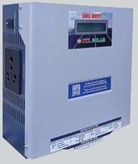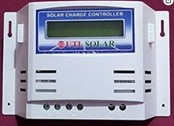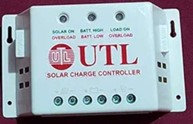Charge Controllers
A solar charge controller is a small solar device that is used to connect the solar panels to an inverter battery. The controller prevents the battery from overcharging in the daytime and discharging at night.
A solar charge controller can convert an existing normal inverter to a solar inverter. With this device, you will be able to use your existing inverter with the solar system. Hence, a solar charge controller eliminates the need of purchasing a new solar inverter for the solar system while you have a normal inverter.



Now that you know a solar charge controller is an important gadget that affects the overall production of the solar system, you must be careful while choosing the brand for it. Spending a few minutes reading this article, you will get to the answer to the most frequently asked question– which is the best solar charge controller?
Please keep in mind that solar charge controllers are only required with existing or standard inverters. It is not necessary with a complete solar system. So, if you want to convert your existing or non-solar inverter into a solar inverter, install a high-quality charge controller.
Why To Use Solar Controller
If you have an existing inverter- battery installed at your home and you want to connect it directly to your solar panel, you need to hold on. Connecting the two devices directly is not the right way. They can be overcharged and may get damaged before time.
If you directly connect the solar power panel with the solar power battery, there will be no barrier to the inflow and outflow of current. Many times a solar power panel starts to produce extra power due to more sunlight in summer. So your battery can be overheated by it.
Charge controller is a small but important device. It connects the solar panels with your existing inverter and batteries while keeping the connection well regulated. Let’s know why to install a charge controller along with the solar power system.
- Prevent the battery from being overcharged.
- Prevent the battery from discharge at night.
If the current constantly passes into the battery, the internal temperature of the battery will increase. It may burst or damage before the maturity period. Similarly in nights, the current started to flow reversely i.e. from battery to solar panels. Because energy always travels from higher potential to low potential.
Technologies of Charge Controller
Solar charge controllers come in two different types. Both the charge controllers do the same work to control the passing current but with different methods. Hence, we can say, there are two different technologies on which the charge controllers are based. These technologies are namely,
- MPPT Charge Controller (Maximum Power Point Tracker)
- PWM Charge Controller (Pulse Width Modulation)
Let’s understand their working methods and the difference between the two.
MPPT Solar Charge Controller
Maximum power point tracker charge controller converts the passing voltage into battery voltage. It also increases the current when voltage drops.
This power controller extracts maximum power from the solar panel and charges the battery effectively. The MPPT charge controller can give us 96W power out of 100W of solar panels. Which means its efficiency is 96-97%.
PWM Solar Charge Controller
Pulse width modulation charge controllers only utilize the power generated from solar panels and charge the battery. In this charge controller, current is passed into the battery in the form of solar pulses.
A PWM technology based solar panel is known as the standard type of solar charge controller. It is traditional, simple and cheaper. It can provide up to 70W of power out of a 100W solar power panel.
MPPT V/s PWM Charge Controller
Both the technologies are popular in their specific fields though there are certain clear cut differences between them. While comparing the two types of solar charge controllers, you will find that the main points of difference between the two are as mentioned in the table.
| Technology | MPPT Charge Controller | PWM Charge Controller |
|---|---|---|
| Working Criteria | MPPT is more with 96% extra capacity. | PWM controller are less effective. It can extra only 70% power of Solar panel. |
| Availability | MPPT solar charge controller is new but having good results. | PWM has been introduced in market since long time ago. |
| Limitations | It reduces the power of solar panel only upto 4%. | It reduces the power of solar panel upto 30%. |
| Prices | MPPT Controller is comparatively more expensive. | The Price of a PWM charge controller is less than MPPT controller. |
